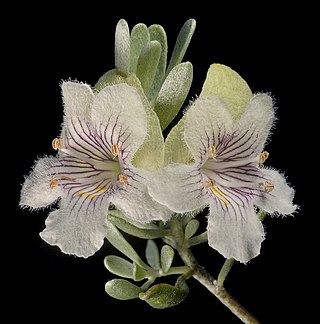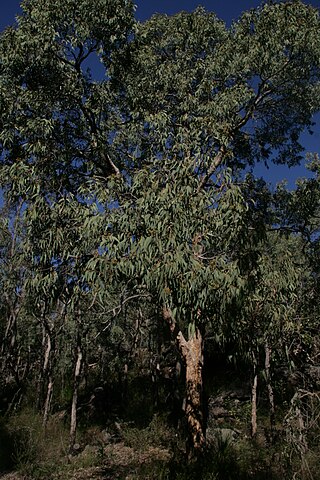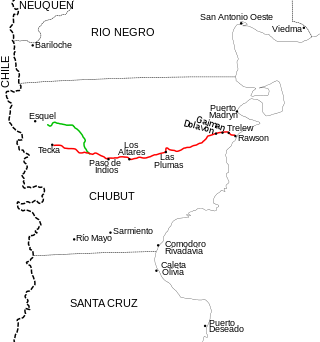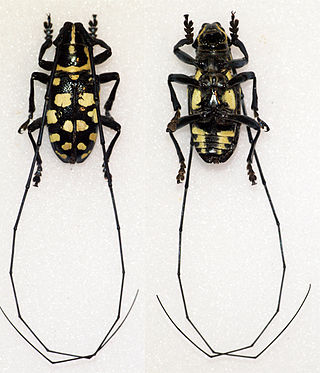
Morchella, the true morels, is a genus of edible sac fungi closely related to anatomically simpler cup fungi in the order Pezizales. These distinctive fungi have a honeycomb appearance due to the network of ridges with pits composing their caps. Morels are prized by gourmet cooks, particularly in Catalan and French cuisine, but can be toxic if consumed raw or undercooked. Due to difficulties in cultivation, commercial harvesting of wild morels has become a multimillion-dollar industry in the temperate Northern Hemisphere, in particular North America, Turkey, China, the Himalayas, India, and Pakistan where these highly prized fungi are found in abundance.

Dicentra, known as bleeding-hearts, is a genus of eight species of herbaceous plants with oddly shaped flowers and finely divided leaves, native to eastern Asia and North America.

Prostanthera, commonly known as mintbush or mint bush, is a genus of about 100 species of flowering plants in the mint family Lamiaceae, and all are endemic to Australia. Plants are usually shrubs, rarely trees with leaves in opposite pairs. The flowers are arranged in panicles in the leaf axils or on the ends of branchlets. The sepals are joined at the base with two lobes. The petals are usually blue to purple or white, joined in a tube with two "lips", the lower lip with three lobes and the upper lip with two lobes or notched.

Glochidion is a genus of flowering plants, of the family Phyllanthaceae, known as cheese trees or buttonwood in Australia, and leafflower trees in the scientific literature. It comprises about 300 species, distributed from Madagascar to the Pacific Islands. Glochidion species are used as food plants by the larvae of some Lepidoptera species including Aenetus eximia and Endoclita damor. The Nicobarese people have attested to the medicinal properties found in G. calocarpum, saying that its bark and seed are most effective in curing abdominal disorders associated with amoebiasis.

847 Agnia is a minor planet orbiting the Sun. It is approximately 28 kilometers in diameter.

Leccinum is a genus of fungi in the family Boletaceae. It was the name given first to a series of fungi within the genus Boletus, then erected as a new genus last century. Their main distinguishing feature is the small, rigid projections (scabers) that give a rough texture to their stalks. The genus name was coined from the Italian Leccino, for a type of rough-stemmed bolete. The genus has a widespread distribution, especially in north temperate regions, and contains about 75 species.
Agnia is a village in south-central Ivory Coast. It is in the sub-prefecture of Tiémélékro, M'Batto Department, Moronou Region, Lacs District.

Corymbia eximia, commonly known as yellow bloodwood, is a bloodwood native to New South Wales. It occurs around the Sydney Basin often in high rainfall areas on shallow sandstone soils on plateaux or escarpments, in fire prone areas. Growing as a gnarled tree to 20 m (66 ft), it is recognisable by its distinctive yellow-brown tessellated bark. The greyish green leaves are thick and veiny, and lanceolate spear- or sickle-shaped. The cream flowerheads grow in panicles in groups of seven and appear in spring. Known for many years as Eucalyptus eximia, the yellow bloodwood was transferred into the new genus Corymbia in 1995 when it was erected by Ken Hill and Lawrie Johnson. It is still seen under the earlier name in some works.

Sidalcea oregana is a species of flowering plant in the mallow family known by the common name Oregon checkerbloom.

National Route 25 is a 534-kilometer-long paved highway that runs through the center of Chubut Province, Argentina. It extends from the juncture with National Route 40 in Tecka to the bridge on the Chubut River in the city of Rawson. The highway crosses the Patagonian Steppe, joining sparsely populated areas.

Agnia is a genus of longhorn beetles of the subfamily Lamiinae, containing the following species:

Agnia (Agne) Olegovna Ditkovskyte, after marriage — Chadova, born 11 May 1988, Vilnius, Lithuania) is a Russian actress of a Lithuanian origin.

Agnia Grigas is a Lithuanian-born American political scientist and author writing on security and energy issues of Russia, Europe, and the Post-Soviet states. Grigas is known as the author of The New Geopolitics of Natural Gas, Beyond Crimea: The New Russian Empire and The Politics of Energy and Memory Between the Baltic States and Russia. Grigas holds a Doctorate in International Relations from the University of Oxford. She is a nonresident Senior Fellow at the Atlantic Council in Washington, DC.

Agnia pulchra is a species of beetle in the family Cerambycidae. It was described by Per Olof Christopher Aurivillius in 1891. It is known from the Philippines. It contains the variety Agnia pulchra var. sulphureomaculata.

Aprophata eximia is a species of beetle in the family Cerambycidae. It was described by Newman in 1842, originally under the genus Abryna. It is known from the Philippines.

Cinderella is a 2012 Russian romantic comedy film directed by Anton Bormatov. The picture is a modernized version of the Charles Perrault tale.














